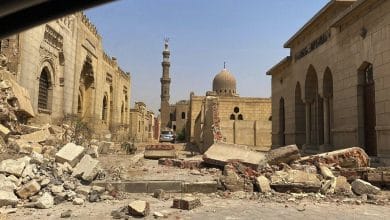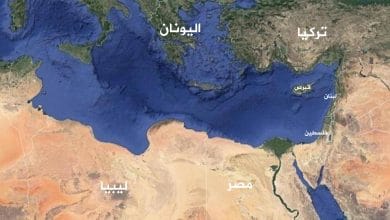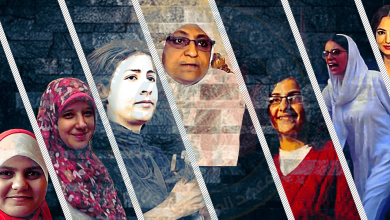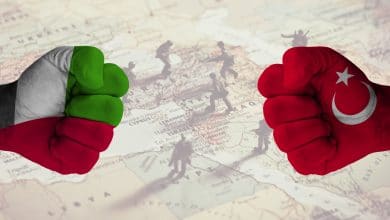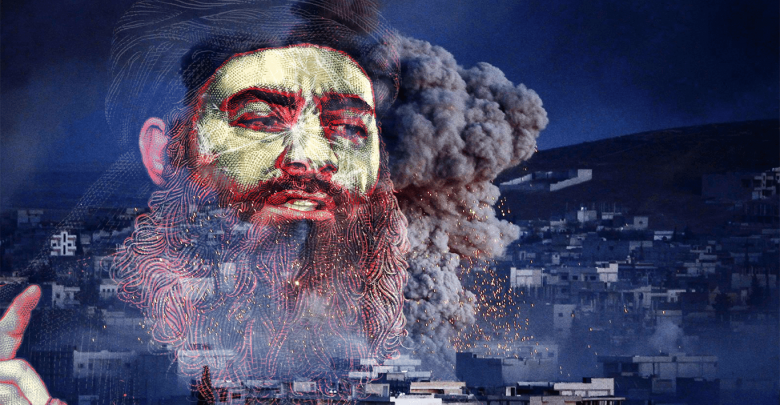
Ideological Conflict and Division within ISIS
The waning of the Islamic State in Iraq and Syria (ISIS) in the field of ground fighting, the fall of its strongholds in Iraq and Syria, and the death of most of its leaders are not the only manifestations of a crisis that is ravaging the ranks of the militant organization and threatening its existence. In fact, the cracking in ISIS ideological structure and the sharp division among its leaders, Sharia theorists, preachers and soldiers is the most prominent manifestation of this crisis, especially, that this division was not due to different jurisprudential, strategic or organizational stances or views, but it was due to a conflict in ideological and methodological convictions.
The paper attempts to approach this thorny topic in the light of the following questions:
– What are these differences about and when did they arise within ISIS?
– What are the ideas and convictions of the rival streams?
– What are the causes, background, dimensions and manifestations of this division?
– What is the attitude of Abu Bakr al-Baghdadi towards this dispute?
Roots and contexts of ideological differences within ISIS
1- ISIS and the principle of “Takfir”
The ISIS is an organization that is based on the principle of “Takfir” (declaring that a fellow Muslim is an apostate, i.e. not believing in the essential tenets of Islam, and therefore no longer a Muslim). In fact, Takfir is a central issue in ISIS ideological structure and the main determinant of its existence. ISIS also believes that other jihadist components are “apostates”: Building its legitimacy on the principle of “Takfir” and apostasy of opponents, including other Islamist components, the militant organization justified to members its fight against the “infidels” – including other Islamist sects – with the aim of undermining them all.
To “maintain” this central concept and to control the Sharia discourse within its ranks in the interest of the organization and its combat doctrine, ISIS created several bodies to achieve this end.
However, the Islamic State failed to resolve issues like “Kufr” (denial of the articles of Islamic faith) and “Iman” (belief in the six articles of faith, known as ‘arkan al-Iman’), and failed to compel its followers to unified positions in this respect.
Therefore, the organization has recently witnessed conflicting ‘fatwas’ followed by sharp ideological differences between its senior leaders and Sharia theorists.
2- When did this dispute start?
Undoubtedly, ideological disputes within ISIS started to come forth after the organization’s expansion into Syria on 9 April 2015, but this does not mean that it had not existed before.
It is known that after the US occupation of Iraq and the emergence of various jihadist factions, the Aqidah-associated issues (issues related to the Islamic creed) were not subject of debate, controversy or conflict between these factions, given that the American occupation and expansion of the Shiite influence united them all under one single goal, namely, “Forcing the American occupation out of Iraq and protecting the Sunni Muslims”.
However, after expansion of ISIS into Syria, a new reality emerged – unlike the situation in Iraq – which played a major role in stirring up the divide and differences between its ranks. The first area in Syria which witnessed this ideological division within the Islamic State ranks was Aleppo, the first Syrian city to receive newcomers from abroad due to its proximity to the northern border of the country.
Also, some ISIS opponents had jihadist convictions similar to those adopted by the organization itself, which made issuance of Sharia judgments against them a complicated and divisive matter among the Islamic State leaders.
In previous times, any disagreement within jihadist movements had been immediately controlled within narrow limits. Also, the cyberspace in which jihadists used to deliberate their positions and views, represented in jihadi forums, was under strong control of a group of vigilant admins, who did not hesitate to modify or delete any participation that might be inconsistent with their orientations.
However, this is no longer the case with the emergence of social networking sites that gave everyone unlimited space to express their opinions freely and reach the user audience with ease. Thus, ISIS Sharia theorists, preachers and members found windows to spread their views and address their supporters without censorship, which has left their differences out of control.
3- Institutions overseeing the ISIS Sharia discourse
Faced with the chaos of issuance of ‘fatwas’ amid ideological liquidity as a result of the abundance of cadres that came from outside Syria with a momentum of conflicting Sharia convictions, the ISIS leaders created some bodies to regulate and legalize the Sharia discourse within the framework of a complicated bureaucratic multidisciplinary system.
The most prominent institutions whose work was linked to the Sharia aspect within the ISIS organization, included:
– Methodological Control Commission: A committee established and supervised by Abu Mohammad Furqan, founder of ISIS propaganda apparatus. The Commission undertakes a comprehensive assessment of Sharia theorists and preachers and submits a detailed report to the Caliph Office, concluded with recommendations.
– Office of Research and Studies: It is the only official body authorized to issue Sharia fatwas approved by the organization, and is the main stronghold of the current of Bin-Ali and Al-Qahtani”. It is an independent body that examines matters related with Sharia issues and ‘Iftaa’, that is directly affiliated to the Caliph or his deputy, especially that it was established upon his direct orders.
– Central Office for the Follow-up of Sharia Sub-Offices: It is a supervisory institution created by the Islamic State organization to subject Sharia-related joints to surveillance, and issuance of binding statements and circulars.
– The Authorized Commission: It is one of the most important and most influential institutions of ISIS after the Caliph Office, The Authorized Commission oversees the offices, bodies, sub-offices and provinces all over the “State”.
– Al Himma Library: It is a publishing house of ISIS, which is responsible for publishing approved books, pamphlets and brochures.
In addition, many other bodies have been established, such as the Office of Da’wa and Mosques, the Office of Education and others.
In spite of the abundance and diversity of bodies and institutions entrusted with the mission of controlling and managing the Sharia discourse within ISIS, they have miserably failed to achieve their objective. Instead, they played roles in fueling conflicts between opponent parties within the organization.
The levels and dimensions of this dispute can be divided into two dimensions:
– Ideological dimension
– Organizational dimension
The ideological division within ISIS
It is a doctrinal controversy in which each party tries to impose its “theoretical” and methodological positions, and make it the official doctrine and ideology of the “State”, dividing into three competing streams:
1- The Hazmi Stream
The ‘Hazmi Stream’ was named after Sheikh Ahmed bin Omar al-Hazmi, a Saudi scholar from Makkah and a graduate of Umm al-Qura University. Al-Hazmi specializes in theology and Arabic language and has a good knowledge of “logic”.
After the fall of the Zine El Abidine Ben Ali regime in Tunisia, Sheikh Ahmed bin Omar al-Hazmi was among the Muslim scholars who went in Tunisia to conduct advocacy and educational activities. He held religious courses in the field of “Aqidah” (Islamic creed) in which he addressed the most serious and sensitive topics, such as “Explaining the Nullifiers of Islam” and “Tawheed Book”. Al-Hazmi’s courses were attended by some elements and cadres of Ansar al-Sharia in Tunisia, as well as others, mostly independents.
As the Syrian revolution entered the phase of militarization and establishment of jihadist factions, those who had attended the courses of Sheikh al-Hazmi travelled to Syria, carrying with them the ideas of the sheikh as their own doctrine. Due to the radical nature of al-Hazmi ideas, they convinced and contained enthusiastic young Tunisians who had been freed from the restrictions of secularism that had dominated the country before. Also, Al-Hazmi radical ideas were adopted by a sect of jihadists.
2- Al-Furqan Stream
The “Al-Furqan Stream” was named after Abu Mohamed Al-Furqan, an ISIS leader who dedicated and imposed a set of Sharia convictions and positions on ISIS Sharia theorists and members, taking advantage of his influence and control over the most important organ of the militant organization, the “Central Media Office”, and his ability to exert pressure on other ISIS bodies, which enabled him to formulate a jihadist narrative that played a major role in the conflict that has undermined the ideological structure of the organization.
This stream tightened its grip on the Islamic State for a period of time, and led a massive cleansing campaign against all its internal opponents, whether these opponents belonged to the “Hazmi Stream”, or to the “Bin-Ali and Qahtani Stream” with whom they exchanged control over the joints of the “State”.
Third: The Bin-Ali and Al-Qahtani Stream
This stream is one of the most ISIS streams in the abundance of authorship and activity in the writing of responses and Ta’seel of Sharia issues (Ta’seel means contextualization or going back to roots); therefore it is also described as the stream of “scholars”, where its key members include prominent figures of the ISIS Sharia theorists and preachers who devote their time to fatwa, preaching and lectures. The Bin-Ali and Al-Qahtani Stream imposed its control on the joints of the ‘Office of Research and Studies’.
This stream is named after Turki bin Mubarak bin Ali and Abu Bakr al-Qahtani, because they were the two persons that led the conflict with the rival streams within ISIS:
Turki bin Mubarak al-Binali is a young man of Bahraini origin, born in 1984, who visited most of the Arab countries for studying Sharia under prominent sheikhs loyal to the jihadist orientations. He joined ISIS in Syria and worked as Mufti; then he appeared in the Libyan city of Sirte when it was under the ISIS control. Later, he returned to Syria as an official in the Office of Research and ‘Iftaa’ and then member of the Office of Research and Studies. He was killed in an air strike by the US-led international coalition on the Syrian city of Mayadeen on 31 May 2017.
Abu Bakr al-Qahtani was a Saudi young man under 20. He was fluent in the art of debate and managing dialogue, and he was familiar with the Aqidah issues that have sparked conflicts among ISIS ranks. Al-Qahtani occupied several positions in the militant organization, including membership of the Methodological Control Commission and worked as judge of the Iraqi city of Mosul. Al-Qahtani was killed in a strike by the US-led international coalition on the Syrian city of Deir Ezzor on 8 August 2017.
Exam in Aqidah
The turmoil in Sharia issues and the methodological tension in the ISIS ranks, amid an apparent influence of the Furqan Stream at the expense of the Bin-Ali and Al-Qahtani Stream, led to the establishment of a procedural mechanism that was employed in the midst of the conflict of the ISIS rival parties, namely, examining Aqidah (Islamic creed) and testing convictions through the Methodological Methodological Commission.
The ISIS ideology changing!!
On 17 May 2017, the “Authorized Commission” issued a circular binding on all soldiers and nationals of the “State” using part of a Quran verse from Surat Al-Anfal – 9 as a title: (That those who perished [through disbelief] would perish upon evidence). The circular came in an attempt to put an end to the pervasive differences in the joints of the militant organization, and to emphasize that the “Furqan Stream” actually holds the most important body in the “State” and can bind everyone to his convictions on Sharia issues and its methodological rooting. The circular listed the views of al-Qahtani and Bin-Ali and al-Harbi in the context of ‘wrong views attributed to ISIS’.
The circular “That those who perished [through disbelief] would perish upon evidence” aroused a sharp debate, and the Bin-Ali and Qahtani Stream moved to respond, rejecting everything stated in the statement.
Qualitative breakthrough
The Bin-Ali and Al-Qahtani Stream managed to make a qualitative breakthrough and penetrate the circle around Abu Bakr al-Baghdadi and was able to control the highest institution in the ISIS after the “Caliph Office”. The stream also managed to set up its doctrine and Sharia discourse and restore the books seized by Al-Furqan Stream and allow their circulation again.
Accordingly, Abu Bakr al-Baghdadi sacked the members of the “commission” that supervised issuance of the circular of “That those who perished [through disbelief] would perish upon evidence” and issued arrest warrants against them. Then, the ISIS General Security Office launched a campaign to hunt them down and liquidate them, but some managed to flee outside Syria.
After that, Abu Bakr al-Baghdadi appointed a new commission, where most of its members were from the Office of Research and Studies, under chairmanship of Abu Mohamed al-Masri. The new commission was assigned the task of drafting the Islamic State’s doctrine. However, debate and division did not end there.
The new commission prepared a series of audio lessons, titled, “Educational Series in Explaining Methodological Issues”, explaining the doctrine of the Islamic State – under the supervision of Abu Mohamed al-Masri.
Thus, the Bin-Ali and Al-Qahtani Stream took control of ISIS and launched a purge campaign targeting the Sharia theorists loyal to the Furqan Stream.
It is noticeable that the arrests and liquidations suffered by the Sharia theorists and preachers, whether from the “Bin-Ali and Al-Qahtani Stream” or the “Furqan Stream” were not against the background of their convictions on Sharia-related issues, but because of “causing a split in ISIS ranks” and “failure to obey given orders”.
This means that the priority of the elite surrounding Baghdadi has been to maintain cohesion and unity of the remainder of the militant organization, especially as it is at the brink of a new stage, where ISIS may not be able to control its personnel and commit its cadres to its policies, namely the stage of guerrilla warfare and secret security work.
Institutional division in ISIS
The disagreement and ideological differences between ISIS rival parties have led to a conflict in the powers of the bodies established by the militant organization to control its ideological discourse and to manage the “emerging caliphate” that was expected to expand. Perhaps the most prominent problem that confused the bureaucratic system of ISIS in the previous phase was the intense competition between the “Central Media Office” and “Office of Research and Studies” and each institution’s pursuit to exercise the powers of others. This is mainly due to the fact that the Central Media Office was a major stronghold of the Furqan Stream and that the Bin-Ali and Al-Qahtani Stream was held by the Office of Research and Studies.
The ambiguous role of Abu Bakr al-Baghdadi
In light of the division and conflict within ISIS and the successive attempts of rival ideological streams to control the joints of the militant organization and manage its effective institutions, some important questions arise:
– What is the attitude of Abu Bakr al-Baghdadi towards this division?
– How has Baghdadi been able to retain his position as “Caliph” and powers in the midst of a conflict in which the “State” changed its doctrine more than once?
– Why did not he resolve the controversy through an audio address, as he used to do on several occasions?
– Why did he turn a blind eye on the controversy within his “State” while every stream claimed that its convictions and positions are identical with those of the “Caliph”?
– Was he hesitant, afraid or not convinced of the usefulness of the verbal debate in which his soldiers and men engaged?
In fact, there are some hypotheses that attempt to explain the ambiguous position of al-Baghdadi regarding the internal crisis that ravaged the foundations of his “State”, but they remain personal views that lack evidence.
It is well established that Baghdadi did not give any of the conflicting parties tangible evidence that he adopts certain convictions. If one of these streams had got any document or audio recording confirming that the “Caliph” adopted their convictions, they would have waved it in the face of other streams to resolve the competition in his favor. But Al-Baghdadi hided his personal convictions and did not show them to anyone.
It is also well-established that what Baghdadi and his elite have done throughout the course of the crisis was only to maintain the stability of the militant organization; and that the dismissal or support of any of the conflicting streams was linked to the interest of the organization in the first place, especially in terms of unity and cohesion, regardless of their ideas.
According to available documents and testimonies, Al-Baghdadi personally ordered the execution of Abu Ja’far al-Hattab who belongs to the Hazmi Stream, dissolved the Authorized Commission, chased and executed some of its members who are loyal to the Furqan Stream, such as Abu Hafs al-Wada’ani. He also dissolved the alternative Authorized Commission whose most members were loyal to the Bin-Ali and al-Qahtani Stream, and ordered the arrest of many of them and execution of others such as Abu Yaqoub al-Maqdesi.
Is this sufficient evidence that Baghdadi and the elite surrounding him are in fact indifferent to the controversial ideological and rhetorical debates, and that they are only focusing on the security of the “State”, acting strictly against anyone who attempts to cross the red lines?
Undoubtedly, if Abu Bakr al-Baghdadi had revealed his personal position on the Aqidah controversial issues, he would have lost his legitimacy to a wide range of his followers.
Some ISIS followers and dissident leaders argue that al-Baghdadi does not have any effective authority, that his character is weak and shaky, and that those who run the affairs of the organization are the Iraqi military elite surrounding him, such as Haji Abdul Nasser, Haji Abdullah and Haji Hamid, and others.
Anyway, ISIS has lost all its strongholds and the rest of its members have returned to guerrilla tactics and covert action, hiding in the valleys of the Syrian deserts and the vast deserts of Anbar. Amid these hard circumstances that are not ideal at all for any ideological conflicts, the ISIS internal conflicts may calm for a while, or it may take another course, away from these sensitive Aqidah issues.
However, it can also be argued that the horizon of differences within the remainders of ISIS remains open to further escalation, as the crisis is no longer confined to the rivalry between the Hazmi Stream, the Furqan Stream, or the Bin-Ali and al-Qahtani Stream, that seek to impose their ideological convictions on the ISIS official discourse, nor to the conflicting powers of the bodies created by the organization to manage the affairs of its “emerging caliphate”, but the dispute now is over the legitimacy of the “Caliphate” itself and the status of Abu Bakr al-Baghdadi within.
– To read the full study in Arabic press here.
To Read Text in PDF Format Click here.